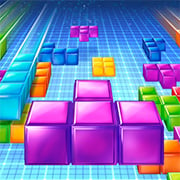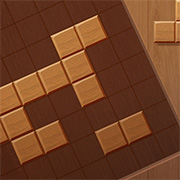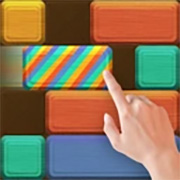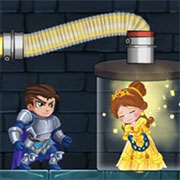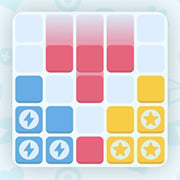- Info
- Reviews
- Share
Tetris Online
Description
The classic puzzle game Tetris® has captivated players around the world, appealing to our inherent drive to bring structure to disarray. This enduring title was first developed by Alexey Pajitnov in 1984, drawing on his background in computer programming and his fondness for mind-bending challenges. Over the years, Tetris has achieved remarkable success and has become an icon of the gaming world, appearing on a vast array of platforms and devices.
Gameplay:
In Tetris, players complete lines by moving differently shaped pieces (tetrominoes), which descend onto the playing field. The completed lines disappear and grant the player points, and the player can proceed to fill the vacated spaces. The game ends when the uncleared lines reach the top of the playing field. The longer the player can delay this outcome, the higher their score will be. In multiplayer games, players must last longer than their opponents; in certain versions, players can inflict penalties on opponents by completing a significant number of lines. Some versions add variations on the rules, such as three-dimensional displays or a system for reserving pieces.
If you want to improve your performance in the Tetris game, you’ll need to focus, plan strategically, and move quickly, especially at higher levels. Here are some tips and tricks for playing Tetris, whether you’re playing for free or not:
- Play Tetris carefully and try to memorize moves.
- Aim to make “tetrises” by clearing four horizontal lines, except for one space that you can fill with a long vertical block.
- Pay attention to the upcoming pieces to plan ahead.
- Avoid leaving gaps that are hard to fill.
- Practice turning the Tetris piece at the last moment to fit it into tight spots.
History of Tetris and the Creator:
Alexey Pajitnov, a Soviet software engineer, joined the Computer Center of the Soviet Academy of Sciences in 1979 as a speech recognition researcher. Though he was tasked with testing new hardware, he was determined to use computers to make people happy. He developed several puzzle games on the Institute’s computer, the Electronika 60, which was a scarce resource at the time. According to Pajitnov, “games allow people to get to know each other better and act as revealers of things you might not normally notice, such as their way of thinking.” In 1984, while trying to recreate a favorite puzzle game from his childhood that featured pentominoes, Pajitnov imagined a game in which random pieces would descend, and the player would turn them to fill rows. Pajitnov decided to scale the concept down to tetrominoes, of which there are seven variants, as he felt that twelve different shapes would be needlessly complicated.
He named the game Tetris, combining “tetra” (meaning “four”) and “tennis,” his favorite sport. Because the Electronika 60 had no graphical interface, Pajitnov created the field and pieces using spaces and brackets. Pajitnov’s early version of Tetris lacked a scoring system and levels, but its addictive quality distinguished it from the other puzzle games he had created. Pajitnov presented Tetris to his colleagues, who quickly became addicted to it, and within a few weeks, it had reached every Moscow institute with a computer.
Pajitnov sought to adapt Tetris to the IBM Personal Computer, and he recruited Vadim Gerasimov, a 16-year-old high school student known for his computer skills, to help him. Gerasimov incorporated color and a scoreboard into the game, and Tetris became even more popular.
Hope you enjoy playing Tetris like the generations of people before you.
Just Have Fun!
How to Play:
This Tetris online provides innovative intuitive touch controls for any device.
Try it on a desktop, mobile, tablet and more.
